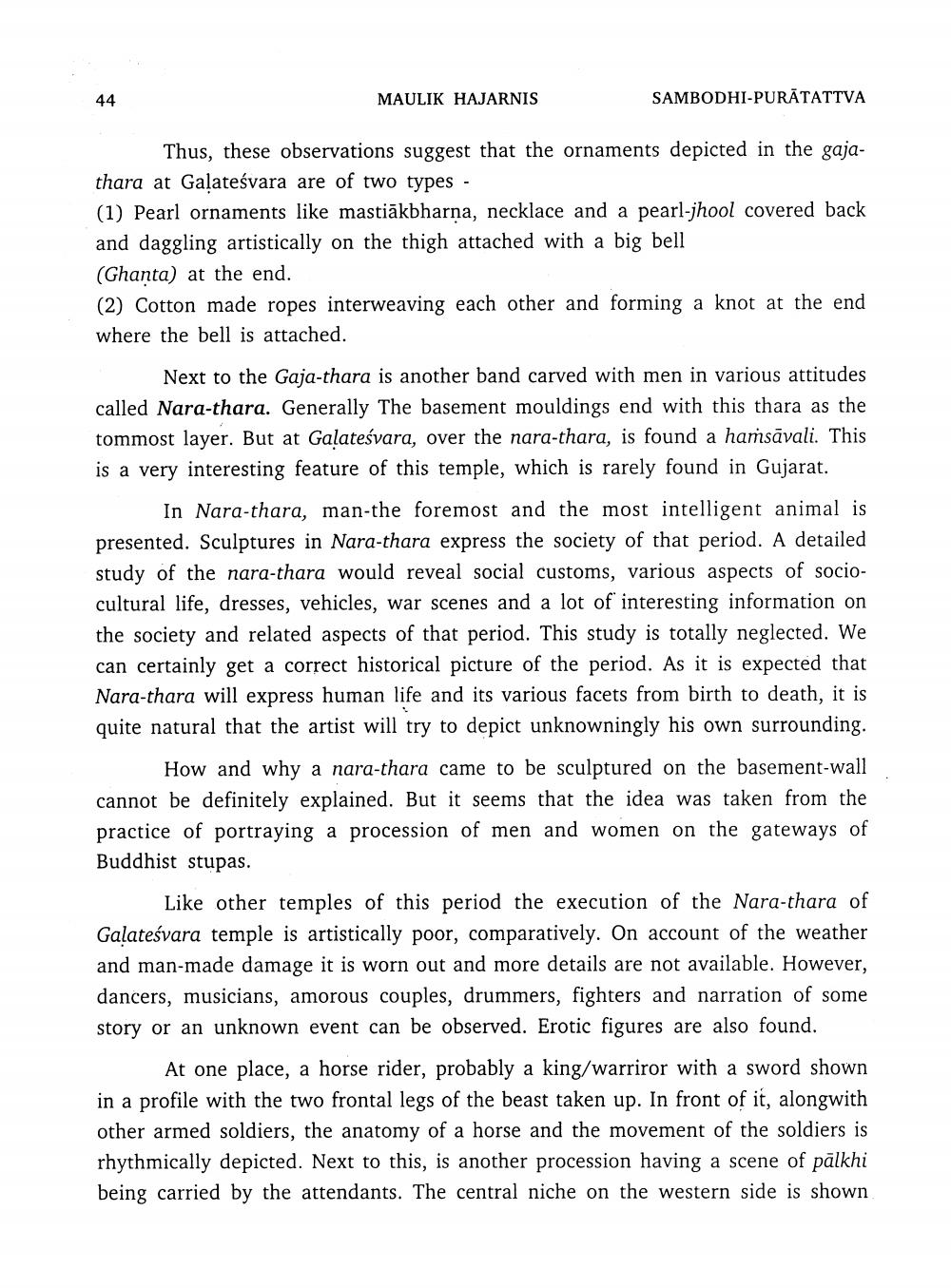________________
MAULIK HAJARNIS
SAMBODHI-PURĀTATTVA
Thus, these observations suggest that the ornaments depicted in the gajathara at Galateśvara are of two types - (1) Pearl ornaments like mastiākbharna, necklace and a pearl-jhool covered back and daggling artistically on the thigh attached with a big bell (Ghanta) at the end. (2) Cotton made ropes interweaving each other and forming a knot at the end where the bell is attached.
Next to the Gaja-thara is another band carved with men in various attitudes called Nara-thara. Generally The basement mouldings end with this thara as the tommost layer. But at Galateśvara, over the nara-thara, is found a hamsāvali. This is a very interesting feature of this temple, which is rarely found in Gujarat.
In Nara-thara, man-the foremost and the most intelligent animal is presented. Sculptures in Nara-thara express the society of that period. A detailed study of the nara-thara would reveal social customs, various aspects of sociocultural life, dresses, vehicles, war scenes and a lot of interesting information on the society and related aspects of that period. This study is totally neglected. We can certainly get a correct historical picture of the period. As it is expected that Nara-thara will express human life and its various facets from birth to death, it is quite natural that the artist will try to depict unknowningly his own surrounding.
How and why a nara-thara came to be sculptured on the basement-wall cannot be definitely explained. But it seems that the idea was taken from the practice of portraying a procession of men and women on the gateways of Buddhist stupas.
Like other temples of this period the execution of the Nara-thara of Galateśvara temple is artistically poor, comparatively. On account of the weather and man-made damage it is worn out and more details are not available. However, dancers, musicians, amorous couples, drummers, fighters and narration of some story or an unknown event can be observed. Erotic figures are also found.
At one place, a horse rider, probably a king/warriror with a sword shown in a profile with the two frontal legs of the beast taken up. In front of it, alongwith other armed soldiers, the anatomy of a horse and the movement of the soldiers is rhythmically depicted. Next to this, is another procession having a scene of pālkhi being carried by the attendants. The central niche on the western side is shown




